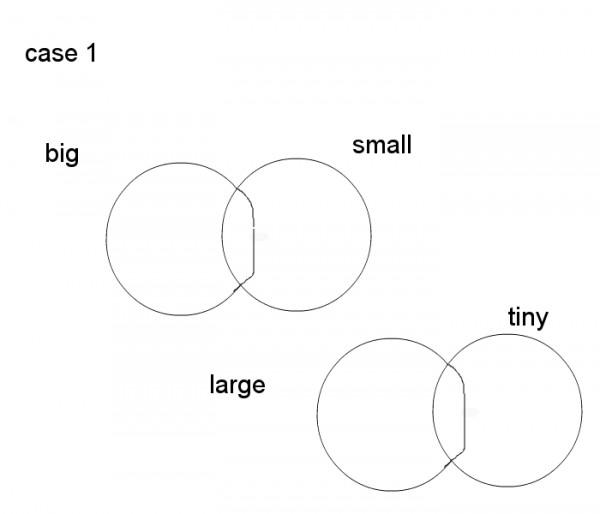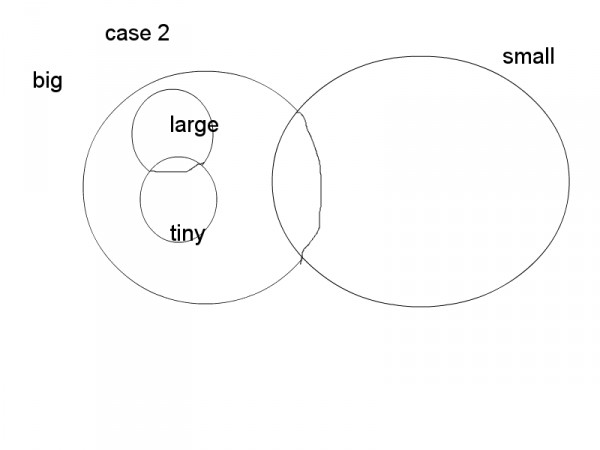I think C is the answer.....correct me if i am wrong
1. some large are not big
--> wrong, diagram case 2 explains large can be part of big, from given data we can not conclude that
2. no big is large
--> wrong diagram case 2 explains large can be part of big, from given data we can not conclude that
3. some small are not tiny
--> i have not shown this in diagram, but small which are not large could be tiny( its possible )
4. some bigs are not tiny
--> no, from given data we can not conclude that

